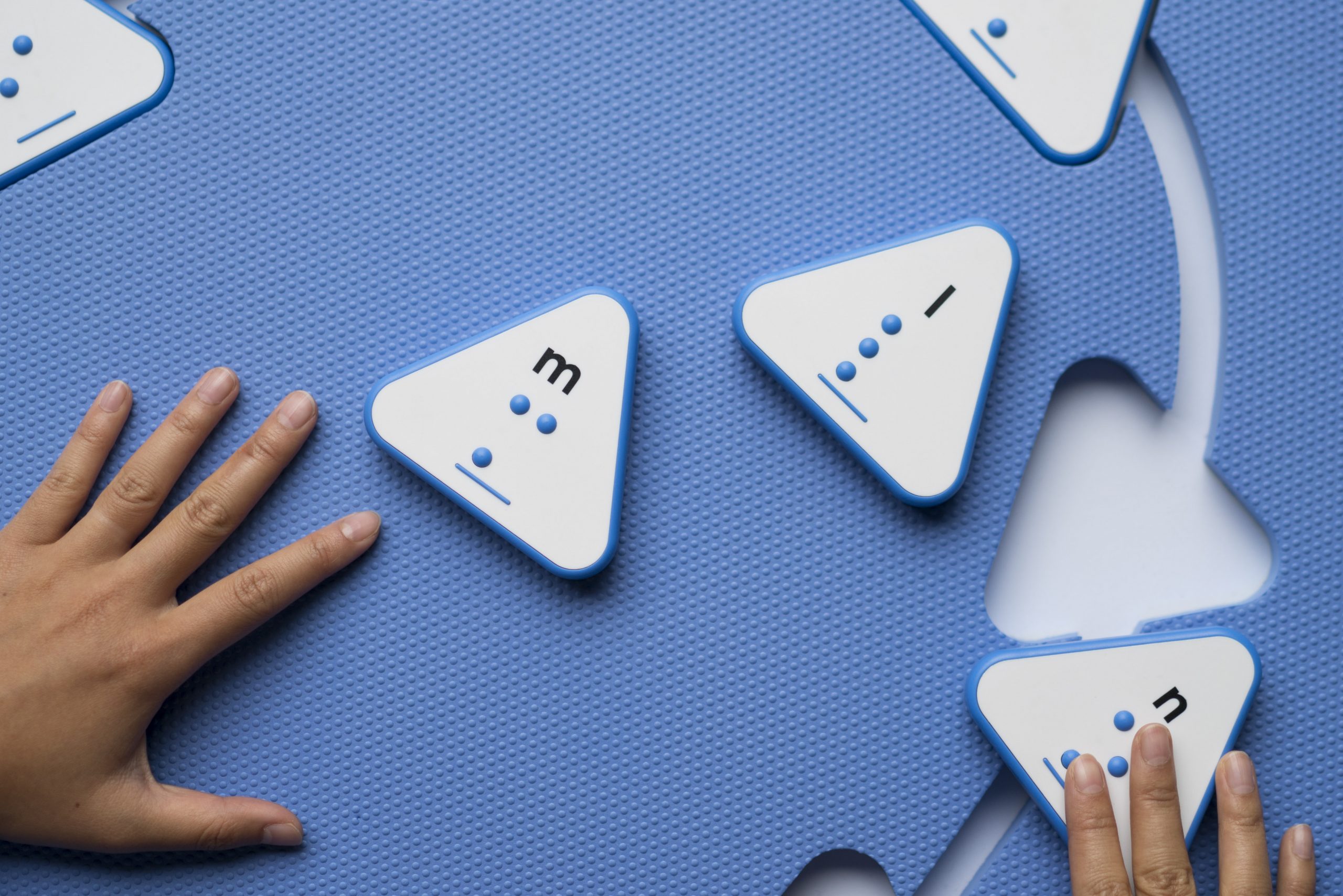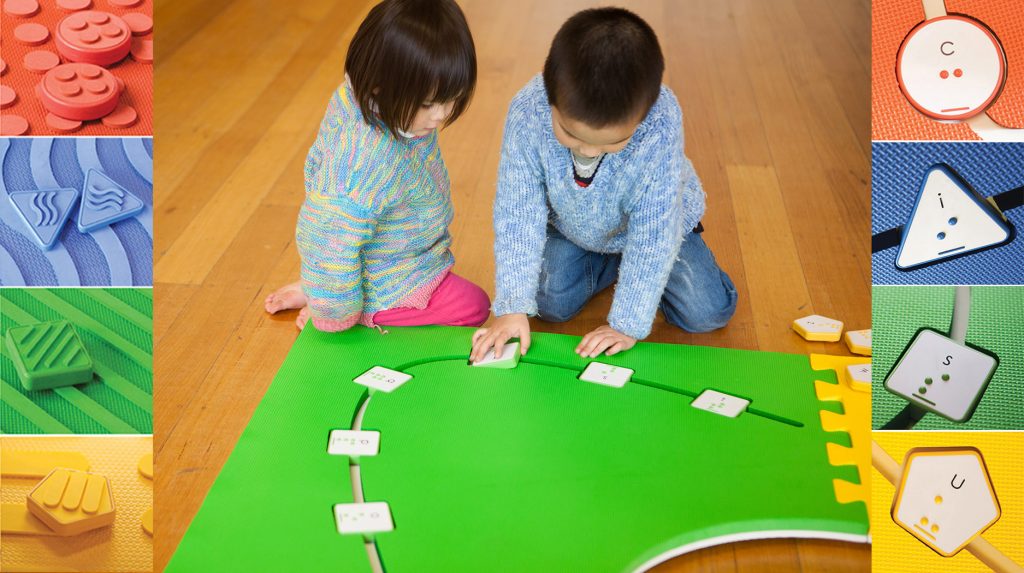
Developing Pre-Braille Skills with Reach & Match in a Fun Way
Happy National Braille Literacy Month and welcome to a brand new 2021!
During my master’s research, I was amazed by braille’s beauty, genius and effective design, and also appreciated the importance and impact of braille for blind and visually impaired people. However, when I found that the number of worldwide braille learners was dropping, I was surprised and saddened as I knew how crucial braille is to help blind people to develop literacy and independence.
Therefore, I designed Reach & Match Learning Kit. It is a multi-award winning holistic play-based program that has been developed through focused research and user testing to support early braille development and the inclusion of children with vision impairment and other disabilities in schools and homes.
The kit consists of four large double-sided sensory mats with textures on one side and shape cut-outs on the other. Twenty-six double-sided shaped tiles with distinctive sounds fit into the mats, with braille and print on one side and textures on the other side. One carrying bag and a program manual are also provided. To learn more about its features, watch this introduction video.

A few fun and effective ways for children to increase their tactile awareness and learn braille:
- Soft or Hard – allow children to freely explore the various components by touching and feeling, and teach them to identify which object is soft and which is hard, e.g., the plastic tiles are hard, the cushion is soft.
- Differentiate different patterns – ask children to feel and identify the four distinctive patterns on the mats and tiles, including round dots, waves, thin diagonal lines, and stripes.
- Big or small – one side of each mat has a tactile pattern that matches corresponding tiles, e.g., ask children to identify the big round dots on the red mat and comparing the small round dots on the circle tiles
- Sorting different shapes – four different shaped tiles including circle, triangle, square and pentagon; ask children to hold and feel, then to sort the shapes.
- Braille alphabets – each tile has both braille and printed alphabet, assisting children in exploring different braille letters by lightly touching and feeling the braille dots with their fingers, e.g., children can start learning the first letters of their names. For an advanced level, children can spell simple words by using the tiles or place the tiles in the correct order using the Reach & Match mats beginning with the red mat then to the blue mat, then to the green mat and lastly, to the yellow mat.
One of the happy users
“For young children who are visually impaired, there are many tactual qualities which make the Reach & Match mats appealing: Colour, texture, and contrast and contours all invite exploration. The braille letters add a tactile and visual dimension which enables children to encounter braille incidentally whilst playing and parents and carers to learn more about the braille alphabet.”
Marg Griffin, Vision Services, Department of Education, Tasmania
To learn more about the Reach & Match applications, watch the APH’s Access Academy webinar on Using Reach and Match to Engage and Educate all Children or Reach & Match website.
*This blog was originally published on APH website.

